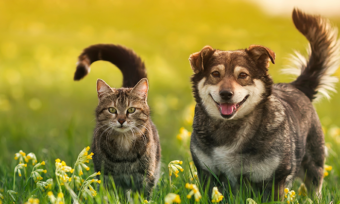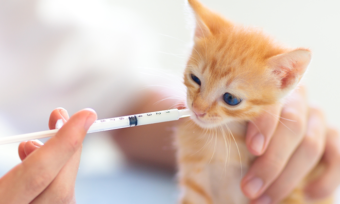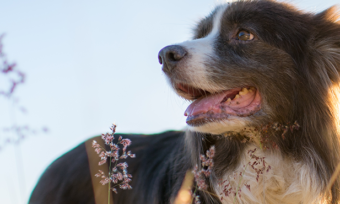Thankfully, it isn’t. With patience and consistency, it’s possible to curb their chasing impulses and protect the health and welfare of our feathery, furry, scaly and other-adorned friends. You could save several lives by taking the time to learn.
So, here are tips for dog parents who want to train their pup not to chase or kill birds and other animals.

Why do I need to stop my dog from chasing wildlife?
New Zealand has some of the rarest animals and most delicate ecosystems in the world. Our dotterel/tūturiwhatu, little penguins/kororā, red-billed gulls/tarāpunga and many others are declining in number.
Unfortunately, these can be put at risk by owners who let their dogs run free in places where there’s wildlife. While dogs may not be the primary cause of the drop in these bird populations, they can contribute to the problem by chasing and harassing birds. Why? Disrupting the birds in this way can cause them stress, injury, and even death – just as it can other animals.
Though a dog chasing a flock of birds may appear harmless at first, it actually isn’t. During the summer, many birds are busy foraging or nesting and they need every bit of energy they have. Dogs’ innate drive to stalk, chase and grab can scare off seals, penguins and other animals, too.
It’s not a pup’s fault for doing what their instinct tells them – it’s our responsibility as pet parents to teach them alternative behaviours.
How to stop your dog from chasing wildlife
As mentioned, the drive to chase or kill birds and smaller animals is instinctual for many dogs.
Some breeds were bred specifically for hunting and chasing prey, which can make things doubly tough! These include terriers like the Jack Russell, hounds such as the Beagle, retrievers such as the Labrador or Golden Retriever and sighthound breeds like the Greyhound.
1. Basic training
Certified dog behaviour consultant and dog trainer Maria Alomajan says, “Remember, we cue a behaviour, we don’t command an animal to do something. Language matters in the world of dog behaviour.”
Start with training behaviours such as “come”, “leave it”, “sit” and “drop.” These behaviours are useful when beginning to teach your pup impulse control.
Do simple exercises, such as asking them to wait before eating their food, before going outside or before playing with a toy. Gradually increase the waiting period duration and reward them when they show self-control. You can teach them to wait until you give a learned signal. There are many more scenarios to practice, such as when crossing a street or when waiting to greet a person.
Games are a great way of enhancing learning, so playing things like fetch with a “wait first”, “stay-ok”, “go find” or “sit – stay” (lead on) will help build impulse control. However, refrain from doing this training in the great outdoors.
2. Use positive reinforcement
When training, be sure to use positive reinforcement dog training. This a method of obedience training that uses reinforcement and positive feedback instead of punishers to teach your pup desired behaviours. The goal is to teach them certain actions lead to positive outcomes and rewards (such as treats, toys and praise).
A behaviour that is reinforced will be repeated, and that’s the desired goal here.
Using aversives on your dog for chasing birds and other animals can be counterproductive, and may make them more anxious or aggressive. In fact, dogs that are obedience trained using aversive methods – like giving them a smack when they do something wrong – have been shown to be up to 15 times more likely to show stress than dogs who do obedience training with positive reinforcement.
3. Use a lead
It may sound simple, but keep them on a lead when they’re out in public. There’s no better way to stop them chasing birds than managing their movements. A longline lead can be especially useful for training, especially when teaching recall or other behaviours you later want to be reliable when the dog is off lead. It gives your dog more freedom to explore while maintaining control and supervision.
4. Try distractions
When you see birds or animals in the distance, use a toy or treat to distract your dog and redirect their attention away. This can help to reinforce positive behaviour and teach them that there are more interesting things to focus on.
5. Exercise
Oftentimes, dogs will chase birds and animals due to boredom or excess energy. Ensuring they have enough mental stimulation and exercise may help curb this behaviour. Check out specific dog breed exercise requirements to see how much activity your pup should probably be getting. Walking them regularly is the simplest way of getting in their steps.
6. Seek professional help
Obedience training a pup to go against its instinctual behaviour can be tough! If you’re still struggling to stop your dog from chasing birds or other animals, consider seeking the help of a professional dog behaviourist or trainer. They can provide personalised advice and training to help you and your pup overcome any challenges you may be facing.
Compare Pet Insurance Providers with Canstar
About the reviewer of this page
This report was reviewed by Canstar Content Producer, Caitlin Bingham. Caitlin is an experienced writer whose passion for creativity led her to study communication and journalism. She began her career freelancing as a content writer, before joining the Canstar team.
Enjoy reading this article?
You can like us on Facebook and get social, or sign up to receive more news like this straight to your inbox.
By subscribing you agree to the Canstar Privacy Policy







Share this article